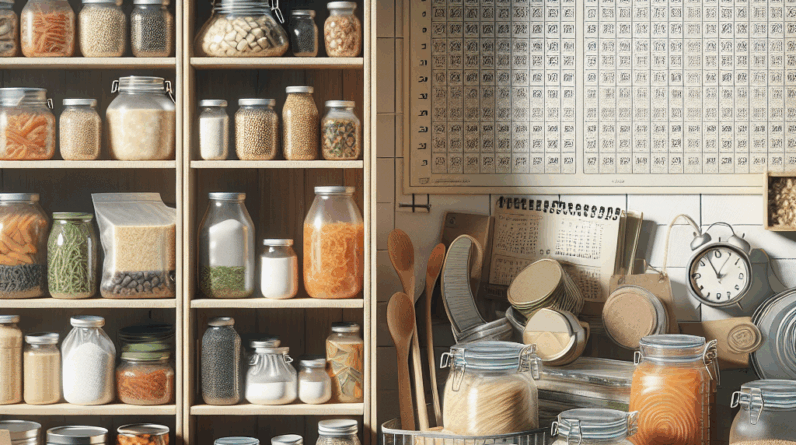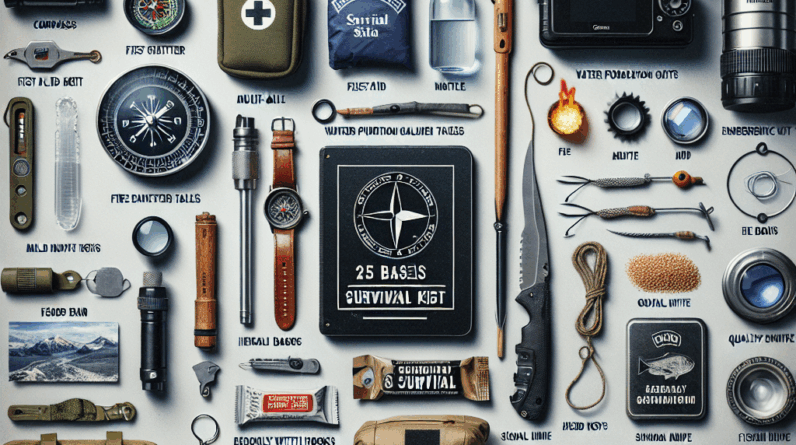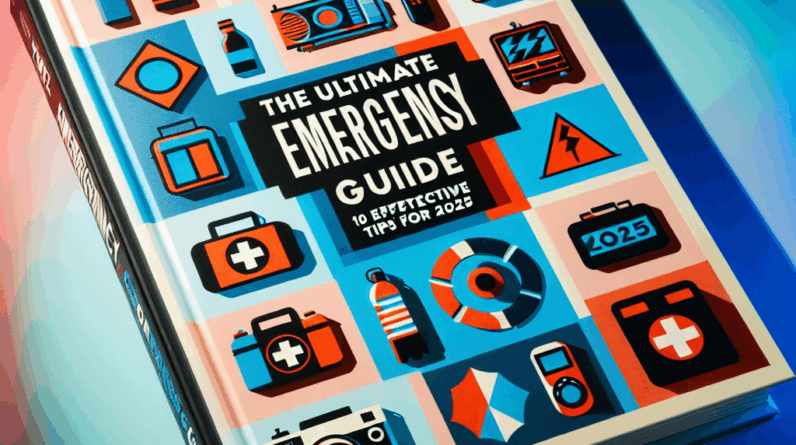Welcome to your ultimate guide for assembling an effective preparedness supplies list for the upcoming year 2025. With the growing frequency of natural disasters and unpredictable global events, being well-prepared is more crucial than ever. Whether you are a veteran in disaster preparedness or new to the concept, this comprehensive guide will walk you through ten essential tips to ensure you and your loved ones remain safe in any emergency.
Understanding the Importance of a Preparedness Supplies List
Having a meticulously curated preparedness supplies list is crucial for any emergency plan. It helps ensure that you do not overlook essential items that could be lifesaving in a crisis. As we move into 2025, the increasing occurrences of natural disasters like floods, wildfires, and pandemics highlight the necessity of these lists. A well-organized list not only helps in efficiently managing your resources but also aids in budgeting and prioritizing based on your specific risks and needs. For instance, if there’s an emerging health threat or you notice an item nearing expiration, updating your list promptly can keep you well-prepared and organized, significantly reducing stress during emergencies.
Assessing Your Risk and Needs
Before you begin compiling your preparedness supplies list, it’s critical to evaluate the risks particular to your location. Whether it’s hurricanes, wildfires, or other natural disasters, understanding these risks will help you customize your supplies effectively. Recent studies show that over 80% of Americans are exposed to at least one natural disaster risk. By analyzing your area’s historical data and climate trends, you can better understand which items are essential for your list. Additionally, consider your family’s specific needs, including children, elderly relatives, or pets, to ensure your preparedness plan covers everyone.
Selecting Emergency Food and Water Supplies
Food and water are fundamental components of any preparedness list. For the year 2025, it’s recommended to store at least a two-week supply of non-perishable food and a three-day water supply per person. Opt for items with long shelf lives such as freeze-dried meals, canned goods, and bottled water. Ensure regular rotation of your stock and choose foods that require minimal preparation. For water, consider purification methods like filtration, chemical tablets, or boiling to guarantee safety. Additionally, look into efficient storage solutions and innovative water collection techniques, which can be invaluable in prolonged emergency situations.
Choosing Reliable First Aid and Medical Supplies
In unexpected health emergencies, having a comprehensive first aid kit is indispensable. Make sure your kit for 2025 includes all essentials such as bandages, antiseptics, pain relievers, and prescribed medications for chronic conditions. Tailor your first aid supplies to meet the specific health needs of your family, considering any allergies or health conditions. Store your medical supplies in durable, waterproof containers and routinely check and replace expired or depleted items to maintain readiness.
Gathering Essential Tools and Equipment
Include robust tools like multi-tools, flashlights, batteries, and manual can openers in your supplies. With the advancements in technology, portable power solutions such as solar chargers and power banks will be crucial in 2025 for maintaining communication and lighting when conventional power sources fail. Also, consider including basic survival tools like gloves, duct tape, and heavy-duty cutting tools which are essential for creating and maintaining shelter in emergencies.
Stockpiling Communication Devices
Reliable communication tools are vital for staying connected with family and emergency services during a crisis. For 2025, ensure your list includes items like battery-powered or hand-crank radios, walkie-talkies, and adequate power backups like solar chargers. Practice your communication plan regularly to make sure everyone in your family knows how to use these tools and understands the emergency protocols.
Organizing Shelter and Sleeping Gear
Your preparedness plan should include items that provide shelter and comfort such as tents, climate-appropriate sleeping bags, and insulation materials. Opt for lightweight, portable options that can be easily transported in case of evacuation. Store your shelter supplies together with other essentials to facilitate quick access in emergency situations.
Maintaining Hygiene and Sanitation Items
Hygiene and sanitation are critical for preventing illness and maintaining morale during a disaster. Include items like soap, sanitizers, wet wipes, and toilet supplies in your preparedness list. Consider innovative solutions like waterless hygiene options and portable sanitation systems, especially in scenarios where water supply may be compromised.
Creating a Financial Preparedness Kit
While physical supplies are essential, financial readiness is equally important. Ensure your kit includes cash, essential documents, and backups of critical records. With the rise of digital banking solutions in 2025, secure your electronic financial assets and keep physical cash handy in case digital networks are down during emergencies.
Regularly Updating and Testing Your Supplies
The effectiveness of your preparedness supplies list relies on its current relevance and functionality. Set a regular schedule to review and refresh your supplies based on the latest risks and personal changes. Conduct drills to familiarize everyone with the supplies and their uses. This practice helps ensure that your preparations are effective and your family is confident in using the supplies during actual emergencies.
Frequently Asked Questions
1. How often should I update my preparedness supplies list?
It’s advisable to review and update your list at least biannually, or as soon as new risks arise or personal circumstances change.
2. What are the top 3 items to include in a 2025 preparedness supplies list?
Essential items include water, non-perishable food, and a comprehensive first aid kit. These are crucial for immediate survival and effective response in emergencies.
3. How can I ensure my supplies are eco-friendly and sustainable?
Opt for reusable products, solar-powered gadgets, and minimal-packaging food options. Supporting environmentally responsible brands also helps promote sustainability.
4. Why is a preparedness supplies list essential for 2025?
With the increasing threats from natural disasters and disruptions, a well-organized list ensures you are prepared and can respond swiftly and effectively in emergencies.
5. Where can I find reliable resources for my preparedness supplies list?
Trusted sources include FEMA, the American Red Cross, and the CDC, which offer updated guidance on recommended supplies and best practices for emergency preparedness.
In conclusion, building a detailed and well-maintained preparedness supplies list is your best strategy to protect yourself and your loved ones against the uncertainties of the future. By staying informed, making thoughtful selections, and committing to regular updates, you can ensure your readiness for any disaster that 2025 might bring. Remember, preparedness is a continuous effort—stay proactive, stay safe, and take action now to secure your peace of mind for tomorrow.




